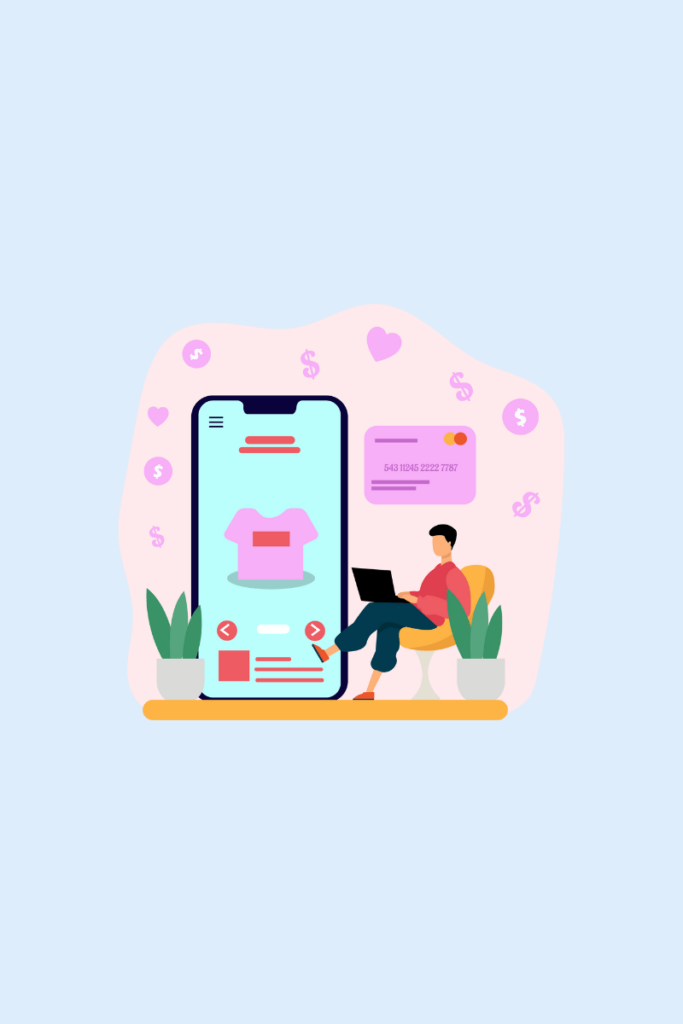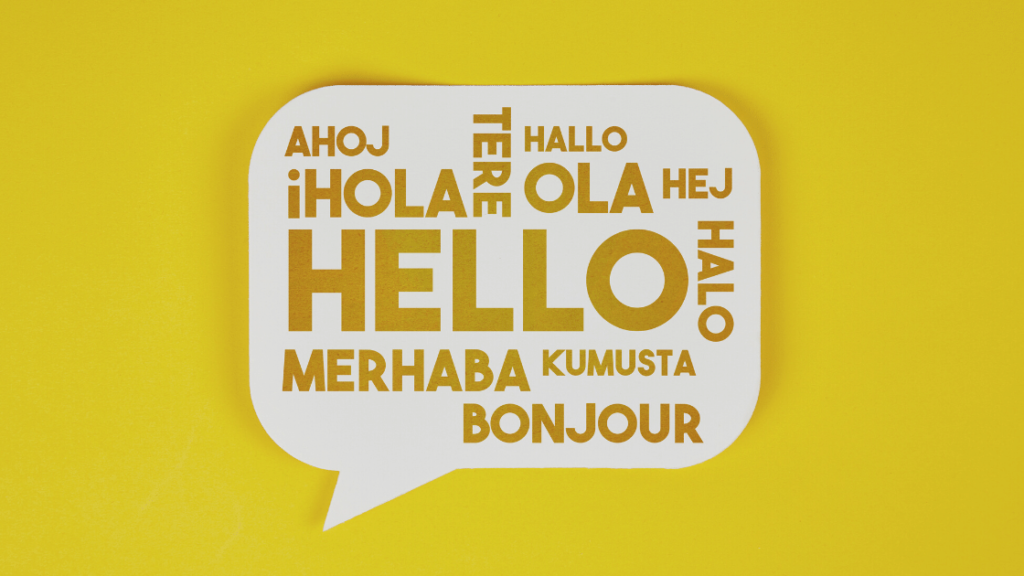Why Are Native Linguists So Important for Translation?
To celebrate International Mother Language Day, we’re looking at why native linguists are so important to use in translations, and why they’re absolutely vital to us.
Here at Web-Translations, we pride ourselves on using qualified professional linguists for every piece of translation that we do. Our linguists are important for not only producing high-quality translations, but also for reviewing them.
Having The Extra Edge

When learning a language, it’s not just the grammar and vocabulary that you need to learn. It’s also the various other nuances that you need to adapt to. These include cultural differences. These aspects also apply when translating content too!
This means that if a non-native linguist was used to translate, they would need to carry out extensive research to ensure all of the nuances were translated into the target language effectively. However, to a native linguist these factors will come to them naturally. For example, if someone approaches you on a train, and makes you feel uncomfortable, you may ask ‘can I help you?‘. If you used the more formal form of ‘you’, Sie in German for example, this would indicate to others that this person is a stranger. This would be instinctive for native speakers, but for learners, it might be less obvious.
Essential Knowledge
Going the extra mile to show your target audience that you care is key to increasing sales for your business. For example, if a company is looking to translate content for an area with more than one main language, a linguist would be able to identify any issues or benefits that come with each language. A firm hoping to establish a presence in Barcelona, for instance, must consider not only their Spanish-speaking audience, but also their potential Catalan-speaking audience. Working with a native Catalan speaker would provide essential insights into this target audience. This would also ensure that the company’s products or services are available to even more people than if it were just available in Castilian Spanish. This would help you to form a stronger relationship with your target audience in Barcelona, as it proves that you care about them and have taken the time to research and would consequently convert more sales.
At Web-Translations, we go the extra mile for our clients. As standard, we have all of our translations reviewed by a second native linguist. This is to ensure the highest quality translation is provided. Our native proofreaders check every element of a translation and identify any elements that need adjusting or if there is an alternative translation. After all, we’re all human, so mistakes can happen from time to time. But with our two professional native linguists, these mistakes can be avoided.
Localisation is Key
Native linguists are also incredibly important when it comes to localisation. Knowledge of the target country’s culture allows you to maintain an excellent reputation for the business. This is where native linguists are experts.

Their knowledge is priceless when localising content, especially for marketing or advertising purposes. It can help advertisers reach a wider audience and avoid any potentially offensive mistakes that could easily derail a whole campaign. When car manufacturer Mercedes-Benz launched in China, they translated their name as Bensi. This name actually means “rush to die”, and once Mercedes realised this, they had to rush to restore their reputation after this blunder. The brand soon changed to “Ben Chi”, meaning “dashing speed”.
Native linguists are the best way to guarantee accuracy, quality and performance in translation. That is something that machine translation can’t quite master. Our linguists are invaluable to creating high-quality professional translation. We quite simply couldn’t do our job without them. The extra level of expertise that they bring is not only invaluable to us, but will be invaluable to you too. Their natural knowledge will help elevate your translated content beyond your competitors, as is their ability to ensure your content is free from potentially damaging translation errors and is carefully crafted with important cultural nuances in mind.
Are you interested in learning more about the importance of professional native linguists in website localisation? Check out our Localisation Advice page here! Don’t forget to check out our Twitter and LinkedIn pages for more industry insight as well!
Exporting Internationally: Where To Start?
Transitioning from a business working solely in the UK to a business that exports internationally is no small feat. There is a lot to consider before exporting to make sure that it’s the right decision for you, your business and your team.
In this blog, we’re going to highlight some aspects to consider when looking at exporting your goods/ services. The information in this blog is predominantly based on a webinar that we attended. It was hosted by The Export Academy at The Department for Business and Trade. They offer a wide variety of webinars, so take a look at their website for more information. This is just a small collection of things to consider, however we hope that this helps you to start the process:
Finances

The step-up into exporting has a huge ROI, but does come at a risk. Do you have enough funds to invest into the initial transition? For example, you’ll need to put multi-lingual marketing strategies in place, as well as the systems to assist with the overseas operations of the business.
Competitors
Are your competitors already exporting internationally? If so, you can use this to your advantage. Where do they currently export to and, more importantly, where don’t they? This can show where they are successfully exporting to, but may also highlight where they haven’t been so successful. It may also be worth considering if exporting your product to certain countries is an already crowded market. Is there enough demand for your product too? Try to highlight your USP to help stand out from the crowd.
Location
The world is such a large place that it’s difficult to decide on where to start your export journey. Reviewing your social media and website analytics allows you to see where there is existing interest in your product and company. Build on what you already have! It may be that you branch into one European country first and then adapt your strategy slightly for other European countries if this first step is successful. Once you’ve invested into the initial systems, they will be in place for you to scale up into multiple countries.

Another aspect to consider is whether your product is suitable for the country and climate? For example, if the majority of people in the country don’t own a house with a garden and instead have a small balcony, selling a tool to help achieve the perfect lawn may not be worth the investment into that country.
Practical Considerations
Are there specific regulations and requirements in the delivery country? They may have specific requirements surrounding IP for example, including patents and trademarks. This is certainly something to look into before beginning the process. It would also be worth looking into whether there are specific regulations of services in the country that you’re exporting to. What do you need to do or provide in order to meet the regulatory status? You may need to register with a country-specific professional body or may need an additional country-specific certification for example.
We hope this blog has given you a basis of aspects to consider before branching overseas, but if you’re looking to export, don’t let language barriers stop you! With over 20 years of experience, we have the expertise to bridge these boundaries for you. Just get in touch with us and we’d be happy to provide you with a free quotation. Keep an eye out on our social media pages for various other export-related blogs!
Social Media Translation: Challenges and Solutions
We all know how important social media is in today’s society. Your social media platform and website is your online shop window – a way to attract customers to find out more. However, many businesses only write their content in their native language. Translating social media content does however have its challenges. After all, adapting and launching your product or service in another country is a huge task. In this blog, we’ve highlighted some of the challenges that you may face but also some suggestions that may help you overcome them too.

The Challenges
Culturally Appropriate
It’s important to ensure your content is suitable for the target audience. This is particularly important for brand names and slogans, but also for images. We have seen some translation mishaps when dealing with brand names. For example, Mercedes-Benz attempted to enter the Chinese market using the brand name ‘Bensi’. This was a shortened brand name to suit the Chinese market, but unfortunately it translates to ‘rush to die’. This is certainly not something that you want to associate with your brand and was damaging for their reputation. On the other hand, a good example of translating a brand name is Carrefour’s for the Chinese market (家乐福 ). This translation relates to the pronunciation of Carrefour, but it also means ‘a family being very happy when shopping in the supermarket’.
Platform
There are various platforms that are used globally, so it’s certainly worth looking into these before making this decision. The different platforms have their own rules and ways of communicating. Facebook is predominantly text, but Instagram is full of images and videos. This means that the images would need to be culturally appropriate and tailored to the country’s audience. In this survey, ‘72% of consumers now say they only engage with marketing messages tailored to their interests’.
It’s also a good idea to subtitle your videos if there is dialogue, so that they are accessible globally. It’s not just the format, that varies, it’s also the length of content. LinkedIn allows you to share long, in-depth content, but Twitter has a very short character limit. This character limit makes it difficult to translate into language that expand during translation. English into French translation for example expands by 25%.

SEO
Translating your content helps you to reach your international audience, but if it’s not Search Engine Optimised, few people will actually see it. There is a huge amount of content shared on the internet every minute of every day. To put this into perspective: 95 million photos and videos are shared on Instagram each day, translating to 65,972 each minute! This is why it’s important to optimise your content. You may already optimise the content in your native language, but the same also needs to be done to your multilingual content. This is where we come in. Translating keywords isn’t as simple as finding the equivalent meaning in the target language. For example, in English you may use ‘houses to buy’, but when translating into German for example, ‘apartments to rent’, as this would be a cultural difference.
It’s a daunting task adapting a brand for another target audience, but it’ll make your audience feel valued. This, in turn, will increase your sales conversions since consumers feel more comfortable purchasing in their own language. We are experts in translation, so we can help protect your global reputation. If you’re interested in localising your social media content but are unsure if on the best way forward, feel free to get in touch and we’d be more than happy to offer our advice!
Social Media Translation: Things to Consider
We all know how important social media is in today’s society. After all, your social media platform and website is your online shop window – a way to attract customers to find out more. However, many businesses only write their content in their native language. But what about your international audience? They need to feel valued too. In fact, 57% of consumers will increase their spending with a company when they feel valued, and 76% actually choose to buy from them over a competitor. And this is where social media translation comes in!
Social media can be difficult to use at times with the various platforms and their immediacy. This makes translating your content into various languages more challenging. But we’re hoping that this blog will make it easier to navigate within the world of social media and reach out to your international audience.
Why is Social Media Important for Business?

Social media influences a lot of our purchasing decisions without us really realising – from paid ads to influencers. Your online presence allows customers to view your products and services 24/7 from the comfort of their own home, on the train and even during their coffee break. 57% of people say that social media influences their shopping decisions, so why not make the most of this as a business. Trading globally has never been easier!
Tips for Social Media Translation
It’s important to really consider who your audience are before translating your social media content. Below are some points to consider:
- Which languages to translate into? It’s important to consider where your product or service is performing/ would perform the best. From here, you can determine the language variant. For example, if you want to target Latin America, you can specify whether you want to use Mexican or Colombian or an alternative Spanish variant.
- What interests them? It may be necessary to adapt your product to be more appealing to your target audience’s interests and culture.
- Which platform is most suitable to your target countries? In North America and Europe, LinkedIn is used more, but in Latin America, it’s Facebook. So it’s certainly worth looking into this to reap the most rewards from the translations.
- What format would your audience react best to and what tone do they prefer content to use? Maybe an e-book or a video? Do they prefer a direct tone or maybe something with a little more emotion?
It may seem like a lot to consider when translating social media content, but it’ll make your audience feel valued. This, in turn, will increase your sales conversions since consumers feel more comfortable purchasing in their own language.
If you’re interested in social media translation but are unsure on the best way forward, feel free to get in touch and we’d be more than happy to offer our advice!
International Marketing | A Focus on Your Customer’s Wellbeing
It is no secret that the online world of social media and marketing can often present a picturesque veneer of an idyllic universe. A universe in which we all have our affairs in order and look picture perfect at any given moment.
Whilst this world can at times provide a welcome escape from the monotony of daily life, it can also isolate many. What is more, this isolation is exacerbated by the fact that the picture-perfect world is often singular, representing one standard of beauty, one version of culture, one language of communication.
The consequence of such a singular marketing strategy is that many feel left out. This both can then negatively influence your prospective customer’s mental health and furthermore reduce engagement with your brand. Quite simply, it’s a lose-lose situation.
This is where localised marketing comes into play. It is common knowledge, that if you want your business to succeed, you need to consider your Ideal Client Profile. But how do you actually talk to your specific client and how do you make them listen?
In this blog, we at Web-Translations are going to provide you with some tips to make sure you’re localising your content the right way. So, get your pen and paper and get ready to start jotting!
1. Language
It may seem like an obvious starting point, but if you’re planning to target the individual customer, you need to do so in their own language. For example, if you’d like to target a Chilean customer, you can’t simply translate your content into ‘Spanish’. You need to ensure that your content is professionally localised into Chilean Spanish.
This is because certain vocabulary has different meanings depending on the country in which it is spoken. For example, whilst ‘guagua’ means ‘baby’ in Chile, it means ‘bus’ in Puerto Rico. Quite different you have to admit!

Although these differences can be comical, they immediately illustrate to the customer that they are not the priority audience. In other words, they immediately suggest that the business doesn’t care about them.
This can then increase the likelihood of a disconnect arising between customer and advert. Research is vital to ensure you’re translating into the right language for your audience. If you need guidance, we would be happy to advise!
2. Content
It is not uncommon for adverts to include cultural references within their content. In likening their product to something associated with a celebrity, many brands may increase their appeal.

For example, if a musician were to liken their new album to the sound of Take That in the 90’s, many British customers would likely be excited at the prospect.
The same might not be said however for a German audience. After all, they’re probably not as up to date with Take That’s greatest hits as we are!
It might be a good idea therefore to domesticate this reference. In other words, it might be a good idea to replace the comparison to Take That to a German band that has a similar sound. (Maybe Scooter would be a good option…?) Your customer still may not recognise the band, but they are more likely to recognise something from their own culture than another’s.
3. Aesthetic
Furthermore, the images used within your marketing campaign should be relevant to your specific audience. For example, if you’re selling a baked good which has a unique selling point of making you feel at home, you might want your image to reflect your target audience’s home and not the source country’s home.

It’s not rocket science, but you might be surprised by how much of a difference it makes.
4. Music
Music is integral to any marketing campaign. Establishing the mood of the video, music has the potential to instantaneously unlock your desired emotion in your customer.

Although it’s often the melody that triggers a reaction, the lyrics may also play a fundamental role.
When adapting your content for each target market therefore, it might be a good idea to think about altering the audio. Whether you substitute the English lyrics for Polish or replace the English song for a Polish song for example, time should be taken to ensure your specific audience is being catered to.
5. Timing
Lastly, our final aspect to consider is time. Across the globe, there are more than 24 different time zones. When planning your social media campaign, these time zones need to be respected. For example, if you’re a British company trying to branch into Mexico, tweeting at 9am GMT is futile. Whilst 9am is a great time of day to tweet, the same cannot be said for 3am in Mexico City.

When planning your social media campaign, therefore, take a moment to reflect upon the time zone of your target market.
After all, if you’re trying to target your customer directly, you don’t want there to be a 6 -hour delay between publication and reception! It may make your customer feel a little bit like an afterthought!
As we’ve established, therefore, it isn’t simply the case that one piece of content suits all. The language, content, aesthetic, music and timing of your content are all variables that should be adjusted and localised to your individual customer.
At the end of the day, it’s simple: people like to feel valued. If your marketing strategy can achieve such a goal, then not merely will you reap greater rewards, but you might just make people happier too!
We hope you’ve enjoyed reading this blog. If you’d like some more tips on reaching your ICP, why not check out our Spring Towards your Target Market blog post. Equally, if you’d like to read more blogs from our Mental Health series, why not start with our Mindfulness in Translation blog post?
Spring Towards your Target Market
With lighter days and daffodils blooming, it is clear that spring is well and truly upon us. And with that, it may be time to have a little sort out!
Yes, spring is the perfect time to refresh, saying goodbye to former, ineffectual habits and hello to revitalised, propitious behaviours. Such changes may take place within your personal life, but such a spring clean can also be carried out within your business.
This is why, at Web-Translations, we wanted to help. Although we may not be able to advise on finance or product creation, we can certainly assist you with the marketing of international campaigns. As such, in this blog, we’re going to go back to basics and explore the five key points to consider when branching out into international trade.

1. Language
It may sound like an obvious starting point, but if you’re planning to target international markets, then it’s important you do so in your target market’s language. Not merely does this illustrate respect to your customer, but it may also increase conversions. This is because online customers are statistically more likely to buy from a website in their own language. For example, a study found that 40% of internet users stated that they would never buy from websites outside their native language. What is more, 65% of people would rather look up content in their native language.

Making an effort to localise your content yields benefits. However, if you’re going to localise, you need to do it right.
In other words, if you’d like to expand into Argentina, it isn’t simply sufficient to get your website translated into ‘Spanish’. You need to ensure that your site is professionally localised into Argentinian Spanish. Furthermore, if you’d like to branch into the Canadian market, you can’t simply reuse your French for France content. You’d need your content localised into Canadian French.
See the pattern? Research is vital to ensure you’re translating into the right language for your target market. If you need guidance, we would be happy to advise.
2. Time Difference
Nowadays, it is taken as a given that any successful company will have a thriving social media presence. Whether it be via Twitter, LinkedIn or Instagram, a global presence is key. However, it isn’t simply the case that one tweet suits all.
Across the globe, there are more than 24 different time zones. Consequently, when planning your social media campaign, these time zones need to be respected. For example, if you’re a British company trying to branch into Mexico, tweeting at 9 am GMT is futile. Whilst 9 am is a great time of day to tweet to achieve maximum outreach, the same cannot be said for 3 am in Mexico City.
When planning your social media campaign, therefore, take a moment to reflect upon the time zone of your target market.
3. Seasonal Difference
Heralding in longer days and warmer climates, March in the Northern Hemisphere signals the start of spring. As such, many businesses move away from the snowy and cosy advertising of winter and shift towards the bright and pastel tones of spring.

However, if you’re targeting international markets, it may be worth holding back on such advertising. Whilst spring may be in vogue in the Northern Hemisphere, the same cannot be said for the Southern Hemisphere. Similar to how time varies in different countries, climate varies too. You should thus consider this when launching any global campaigns.
4. Cultural Difference
Every corner of the world has its own set of cultural traditions that are unique to them. It’s what makes the world a beautiful and vibrant place. However, within these cultures there are sensitivities that need to be respected.
For instance, whilst an image of a sausage sandwich may be enticing to a British audience, this would unlikely be the case for an Arabic-speaking audience. This is because, in many Arab countries, pork is a forbidden food. Any advertising including such meat therefore may not only be fruitless, but it could be disrespectful.
Consequently, when engaging in international trade, an awareness of cultural traditions and sensitivities are essential.
5. Local Competition
Finally, when journeying into international waters, it is important that you know your local competition.
By knowing what your target market currently has to offer, you will be able to ascertain the correct marketing approach. For example, it would be futile advertising a building block related toy as revolutionary and unseen in Billund, Denmark – the home of Lego. Perhaps it would be better to present it with a new twist, building upon an aspect that Lego doesn’t provide… We’re not sure what that could be, but it could be anything!! The world’s your oyster!
When expanding into international markets the basics to consider are: Language, Time, Climate, Culture and Competition.
We hope this blog has helped you go back to basics and encouraged you to have a bit of a spring clean. After all, it is that time of year! Or at least it is for us in the North!
Any other tips you fancy sharing? Get in touch via our social media channels!
Chinese web localisation could transform your business.
Chinese e-commerce grew by 66% in 2011, representing a turnover of 93 billion euros.
With more than 513 million Internet users and 356 million mobile Internet users, according to the 29th Statistical Report on Internet Development in China by the China Internet Network Information Center, China is the world’s largest online market, and this population is continuing to grow.
With rapid improvements in the technological infrastructure there, use of the Internet is continuously evolving and becoming more sophisticated. Combine this with China’s growing middle class who have more buying power than ever before, and you can see why online shopping has become so huge there so quickly. A 2011 study of online buyers worldwide conducted by PricewaterhouseCoopers found that 86% of China’s nearly 200 million online shoppers considered themselves experts at ecommerce, compared to 70% in the UK and 72% in the USA.
With an average of 8.4 online purchases per month by online buyers, China makes developed Western Internet economies look like ecommerce newcomers. For comparison, online buyers in the US made an average of 5.2 purchases and 4.3 in the UK, while in France and Netherlands just 2.6. In Germany, Europe’s largest and strongest economy, this figure was 2.9 purchases. Who are you considering selling online to at the moment? Germany? France? Or maybe China?
Only 42 million people in China (8.2% of Internet users) used travel booking services in the last year. However, the Chinese travel market is predictably seeing fast-paced growth in the coming years so online travel booking businesses are expected to experience higher growth there. South African Airways Simplified Chinese website for mainland China is an example of a full Chinese site translated by Web-Translations.
China’s scale, combined with its online population’s embrace of online shopping, present an important opportunity for businesses wanting to “go international”. However, setting up a business and subsequently succeeding in this country where almost everything is different can prove challenging. Consumer tastes, strict regulations, government involvement, Internet censorship, cultural differences and bureaucratic processes are some of the issues companies need to examine when entering China’s online market, yet the potential seems to outweigh the obstacles bearing in mind the current economic situation we find ourselves in in the West.
Recently we have completed International Blasts for China for some of our clients who aren’t afraid to begin facing this challenge: Brandy Classics and Click Meeting by Implix. This service is a great first step for companies interested in China by setting up a microsite and optimising it so you can begin to see the traffic to your site and interest in your product over there.
To find out how to launch a Chinese version of your website to start selling to China, please contact Web-Translations: sales[at]web-translations.co.uk / +44 (0) 113 815 0460.
First Time Exporters: Full Support for your Website Translation
As the liberalisation of global commerce continues, more and more companies are joining the international market every year. Exporting has traditionally been seen as one of the most risky, and expensive ways to grow a business. While there are many pitfalls and challenges when trading internationally, the Internet offers an excellent way for you to reach out and grow your market share, without investing millions.
Global trade has never been so easy with the First time Exporters Guide. By working with Web-Translations you will have a partner to help you at every stage in your journey. We combine years of experience, with top-quality language and web skills to offer a hand-held, strategic approach to boosting your global trade.
(more…)
Olympic Gold Website Package – Fit for London 2012
Get Fit for London 2012 with the recently launched Olympic Gold Website Package by Web-Translations.
The 2012 London Olympics represents a great sales opportunity. As mentioned in the Getting Fit for the Olympics blog post published last week not everyone is capitalising on this sales opportunity. Do you want to go for Gold in the 2012 London Olympics?
Last year the largest ever campaign by a national tourist board was launched by VisitBritain; the £100 million GREAT Britain You’re Invited campaign. Primarily fronted by five major global celebrities who agreed to film TV ads and help promote Britain overseas.
As VisitBritain’s Mark Di-Toro says, “Now is the time to wave the British flag”. Thanks to the GREAT campaign a global audience of billions will have their eyes firmly set on Britain like never before. Will you be profiting from this interest?
Rapid growth in Turkish eCommerce
Taking a bite from the Turkish delight will reap sweet rewards for online retailers
Turkish e-commerce transactions reached an impressive $12.3 billion in 2011, representing an increase of 57% on the previous year according to the Interbank Card Center. Combine this upsurge with the 12% per year e-commerce growth Forrester Research Inc (FORR) predicts for European growth over the next 5 years, and it becomes obvious that it’s time to pay attention to Turkey.
Impressive statistics, but what’s going on?
Half the population of Turkey is under 30 years old. This young society has been quick to adopt technological innovations and they now spend more time online per week than the worldwide average. This tendency translates into a high responsiveness to social media – 89% of Turkish Internet users are on Facebook and they are the 11th most active country on Twitter.
95% of the Turkish population are expected to have a mobile phone in 2013, with global corporations such as Telecom Italia having already entered Turkey to take advantage of this.
Furthermore Turkey has a credit driven economy, with a 62% credit card penetration among consumers. All of this has led to a positive environment for the development of Turkish e-commerce.
Brazil’s eCommerce market expands by 26% in 2011
E-commerce is booming in Brazil. Supported by a growing middle class, Brazil’s e-commerce total revenue for 2011 was over $11 billion; that’s an increase of 26% compared to 2010 ($8.4 bn). In total, 32 million consumers in Brazil bought at least once via the web in 2011, and the eCommerce market is estimated to be worth around $12.7 billion this year.
So what do Brazilians buy online? The most popular categories reflect the needs of Brazil’s new middle class:
- Home appliances (13%)
- IT (12%)
- Health/beauty/drugs (11%)
- Books and magazine subscriptions (8%)
- Electronics (6%)
Despite this steady growth, many Brazilians still avoid shopping on the internet out of concern about the security of online transactions. The same goes for Internet banking. 26% of Brazilians don’t use online banking, according to a recent survey, and 58% gave the reason that it felt unsafe. The next few years should see a shift in this perception, as banks and etailers work together to improve security and ease of use, and consumers become more familiar with ecommerce and online banking.
Meanwhile, Brazil has developed solutions to overcome these obstacles. One of them is the boleto bancario, a small slip like a proforma invoice that customers can print out and pay at a bank. This is a very common option, which helps to solve the problem that most Brazilians don’t have a credit card. In fact, 55% of the population still receive their salaries in cash, especially those in manual jobs such as housekeeping and construction workers.
All in all, this adds up to a market with huge potential for those companies willing to adapt and make the necessary concessions to make Brazilian consumers feel at ease.
To find out how to launch your website in Brazil and other overseas markets, contact Web-Translations: sales[at]web-translations.co.uk / +44 (0) 113 8150460.
Localise your website and overtake the competition
It’s a statistic we often repeat on this blog, but the fact is that online customers are four times more likely to buy from a website in their own language, so companies who have multilingual websites soon reap the rewards of the time and resource investment they make in website localisation.
Here’s how localisation of even just a few pages can power your export sales to new heights.
While the internet is a boon to international trade, many companies in English-speaking countries are failing to be forward-thinking by communicating internationally.
Localising websites entails adapting products and materials for a particular market and includes – but is not limited to – translating text into the markets’ relevant languages.
A fully localised website shows shows appreciation and respect towards a foreign culture and conveys that you are interested in your potential customers and their respective cultures. It likewise takes into account conventions and preferences specific to each country such as currencies, measurements and cultural differences.
The benefits of localisation are enormous and include penetrating overseas markets you most want to succeed in, increasing market share – and muscling out the competition. It also ensures you can be found in the most popular search engines in each specified market, country or language.
With English accounting for less than 30% of website content, closely followed by Chinese with 22.6% with ‘other languages’ making up 17.8% – the opportunities for growing your business via localisation are unprecedented.
Reaching out to customers in multiple languages brings both short and long term ‘wins’. In addition to the immediate boost to sales, a multilingual website is excellent for testing new markets and opening new doors to international trade.
Summary of key tactics to achieve success
Localise your website – just a few pages will demonstrate serious intentions and improve your search engine ranking in the country you are targeting.
Always use a professional translation service – avoid being tempted to use a free machine translation which is not geared for translating marketing copy which has been carefully crafted to stimulate interest and sell to readers.
Focus on core products and services – launching a selection of your bestselling products or services increases your chances of success in a new market.
Conduct multilingual keyword research – pinning down what customers are actually searching for and adapting your website and online advertising accordingly is critical to ensure your site is the one they browse and then buy from.
Measure results – As you would with your UK site. Visitor statistics are invaluable in evaluating your return on investment and deciding where to concentrate further resources.
Are you planning to take advantage of international opportunities by localising your website? Then let’s talk – email sales[at]web-translations[dot]co[dot]uk or call +44 (0) 113 8150460.
French eCommerce sales to hit 45 bill. EUR in 2012
Within Europe, 70% of online sales are generated by “the big online three”; €48 billion from the UK; Germany €39.2 billion and France €25 billion.
The French online market has grown rapidly in the last couple of years. In 2010, eCommerce alone accounted for €31 billion of the €36.2 billion France sold abroad. In the first half of 2011, turnover for all French ecommerce websites combined reached €17.5 billion (£14.9 billion, $23.6 billion; that’s a 20% year-on-year increase, according to a study by the Invest in France agency.
France now has 90,000 retail websites, including 20,000 created during 2010. In the first quarter of 2011, the iCE 40 index (which is made up of the top 40 ecommerce sites in France) showed a year-on-year growth of 11 % and according to FEVAD, France’s ecommerce and remote sales federation, in 2012 ecommerce is set to accumulate sales of €45 billion (£$61 billion, £38.4 billion), putting it on a par with telecommunications and aerospace sales. Ecommerce currently employs nearly 60,000 people in France.
According to the research conducted by Invest in France, the most popular ecommerce sites in France during the first quarter of 2011 were: eBay (9.1 million visitors per month), Amazon (9.1 million visitors), PriceMinister (7.8 million visitors) and la Fnac (6.9 million visitors).
Many French online shops intend to expand internationally in 2012, so this is a booming market, as is mobile commerce. SEO, Email Marketing and Logistics are all important considerations for French eCommerce companies. The recent availability of .fr domains across the EU also opens up opportunities in the French market.
If you’re interested in launching your company website in France, get in touch: sales[at]web-translations[dot]co[dot]uk/ +44 (0) 113 8150460.
How to beat your competitors to the global market – our top tips
In today’s competitive business environment, it pays to be the first company to market with a new product or service. Here are our tips on how to beat your competitors and take full advantage of global opportunities in your sector.
1. Be the early bird – get there first!
Localise your homepage for multiple markets – then you have the pick of where to focus your attention & resource rather than being forced out of the markets your competitors already operate in.
2. Forge your own path
China, Russia, and other fast-growing economies will compete with you in markets you hadn’t even begun to consider. Don’t follow the herd, but blaze your own trail. This takes confidence and a strong business plan but it is the only way to keep competitive advantage.
When Should Your E-Commerce Startup Go Global?
Selling online has enormous advantages over a traditional business model.The main one is the ability to be instantly global, in the sense that your website can be accessed by anyone, anywhere, anytime. However, very few e-businesses take a global approach from the outset or even seriously consider harnessing this potential once they have reached scale in their home market. (more…)
French domains (.fr) to become available to EU businesses
As of the 6th December, AFNIC – (manager of the registry of .fr domain names) will lift restrictions on the availability of the .fr domain (among others) to European businesses.
If you don’t already have a French website for putting this domain to use, there has never been a better time…
Diageo boosts results with sales in emerging markets
Diageo announced a 5% growth in annual profits today, an increase that Chief Executive Paul Walsh largely attributes to its activities in emerging markets.
While sales fell in Greece, Spanish and Ireland (all economies that have struggled in the last few years), Diageo’s acquisition of the leading Turkish spirits company Mey Icki, and its performance in North America and Asia-Pacific have offset the downturn in European trade.
This makes them the latest in a line of successful global companies who are spreading the risk of underperformance in developed markets such as Western Europe by expanding into countries further afield, or the path less trodden by competitors. (more…)
Is China really an emerging market?
As its imports from and exports to other nations continue to increase at a dramatic rate, and the Chinese government’s continued efforts to encourage citizens to buy home-grown products are proving successful, can The People’s Republic of China really still be considered as an emerging market?
China’s economy has been growing by an average 10% every year for the last 3 decades, the fastest growing major economy in the world. It is the second largest economy after the USA, and could overtake the United States as early as 2020, according to experts at Standard Chartered Bank.
China is also the largest exporter and second largest importer of goods in the world, and became the world’s top manufacturer in 2011, surpassing the United States.
Efficient, stress-free service for Crystal Bridal Accessories
“Thanks for all your help. We are really pleased with all the work you have done – the site looks great and your service was VERY efficient and stress-free. Would recommend you to anyone and if we need another translation will definitely be coming back to your company.”
Amy Karim, Business Manager – Crystal Bridal Accessories
Gateway to trade in the Middle East: an interview with our Turkish partner
Daniel Rajkumar of Web-Translations and Altug Inci of The Related Group discuss their partnership, the latest innovations in technology, and the international trade opportunities available in Turkey.
The Related Group is a digital marketing company based in Turkey aimed at businesses who need to apply technology in the most up-to-date and innovative ways.
The company is composed of several brands:
euro.message, the flagship brand, primarily offers a comprehensive email and mobile marketing system; Made by Cats, a digital agency specialising in website projects for blue-chip and corporate clients; Brandmail provides database marketing services; The Related also represents Omniture analytics and optimisation services in Turkey.
Web-Translations has partnered with The Related Group to offer an extended portfolio of services to all our clients.
For more information on multilingual email marketing campaigns and managing international digital marketing, please email sales[at]web-translations.co.uk or call +44 (0) 113 8150460.




